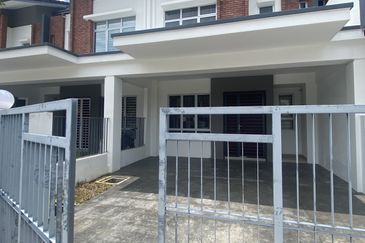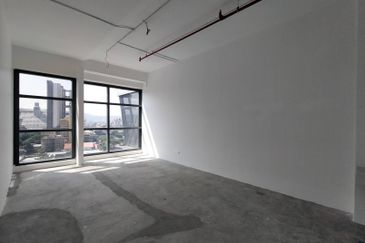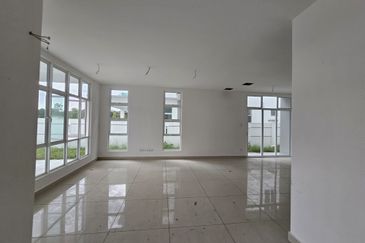KUALA LUMPUR: Megacities are not the future, and the majority of growth will come from midsized cities which have a population of between 200,000 and one million, according to Jonathan Woetzal, chief executive officer of European Climate Foundation, the Netherlands.
“There is no way of having an economically-developed city that is ... an [environmental] disaster, and there is no way of having a fast-growing economy when you have crime on the streets. Very simply put, rich places are nice places to live in,” said Woetzal.
Woetzal was speaking at a Kiel Institute session on “Smart Urban Planning for Megacities” at the Global Economic Symposium 2014 on Sept 8 in Kuala Lumpur.
“We don’t need planning as much as we need smartness. ‘Supportive multipolar responsive thinking’ supports not just economics but the environment and [social] equity,” he said.
According to Woetzal, cities learn from other cities and it ultimately comes down to a dialogue between cities and city leaders as these are the people who ultimately have to be accountable for their conversations and ... actions.
“[Allowing for] the transparency of the information ... provided in dialogue makes that difference,” he said.
He said more leaders who support environmental, social and economic goals are what we need as these individuals are ultimately responsible for our cities.
Woetzal also said instead of planning, principles are needed, and that includes principles of development such as the need to include space for growth for the future.
“If we look at all the great cities, most of the time they are great because they left space for greatness,” he said.
The urban population is estimated to double and total urban area is projected to triple by 2050. The conference addressed the challenge of designing resilient and sustainable cities for such growth, while taking into consideration environmental and ecological factors, infrastructure development, implementation of standardisation efforts, and mitigating urban pollution while promoting the well-being of city dwellers.
“The Asia-Pacific will be responsible for more than 50% of global GDP (gross domestic product) output, and at the same time 50% to 60% of the world’s total greenhouse emissions are also from cities and that number can go up to 80%. We have an important challenge of balancing growth and sustainability,” said Michelle Gyles-McDonnough, the United Nations resident coordinator for Malaysia.
“[For transformation], there must be discussion at the city level where development really concerns people. To address the many complex development challenges, we need to revisit how to do integrated and holistic urban development planning, we need to look at the planning process with much more inclusivity, and one where we see greater participation.
“We talk about sticking to the plan, but we need cities and countries to stick to the plan. Cronyism impacts the predictability of these processes no matter how flexible these plans are. You can set aside space for growth but we need enforceability of rules and regulations to ensure that the space is indeed set aside,” said Gyles-McDonnough.
Also present at the conference was Kuala Lumpur City Hall deputy director-general for planning Datuk Mahadi Che Ngah, who noted that the current population in Kuala Lumpur stands at 1.7 million and is estimated to grow to 2.2 million by 2020.
He highlighted the current figures of three million vehicles entering Kuala Lumpur on a daily basis, with 1,000 new vehicles being registered daily, causing traffic congestions.
Mahadi said some of the initiatives adopted included introducing the integrated mass rapid transit (MRT) to Greater Kuala Lumpur, improving light rail transit (LRT) services and extending LRT lines to allow higher ridership, and having new pedestrian networks in the city with a crime prevention through environmental design (CPTED) concept which has been adopted by New Zealand.
He said the government is targeting to achieve a 40:60 ratio of the Kuala Lumpur population using public transportation to private transportation by 2020 from the 20:80 as it stands now.
The two approaches the government are taking to reach this target are embarking on having a new ring road around the city with six park-and-ride facilities at the transit stations, and encouraging high-intensity residential development in the city to reduce vehicles and encourage more pedestrian network utilisation.
“There is a life cycle to cities. We talk about Hong Kong being dense because it is [congested] there. As cities become more prosperous, people want more space around them so they start to spread out. By 2050, there will be three times the demand for land area,” says visiting scholar at the Urbanisation Project of New York Univeristy Stern School of Business John Pang.
He said cities should ensure that there is land planned ahead of time and that “arterial roads, the grids and the open spaces that cities need are set out ahead of time”.
Meanwhile, Roger Dennis, a trustee from Sensing City, New Zealand believes that it is important to understand how cities work before they can be improved upon and to do so, gathering data and information with the use of sensors is needed to help manage cities and form solutions, using Sensing City as an example.
Albert Ting, the chairman of CS Technology Corp, Taiwan noted that job creation is the catalyst which jump-starts urban development, and cities should invest in infrastructure to jump-start the job creation. He also stated the importance of education.
The three-day conference jointly organised by the Kiel Institute for the World Economy and Universiti Teknologi Mara saw 600 participants from five continents discuss solutions to pressing global problems under the over-arching theme of “Restructuring economies, Transforming societies”.
This article first appeared in The Edge Financial Daily, on September 12, 2014.
TOP PICKS BY EDGEPROP

Livia @ Bandar Rimbayu
Telok Panglima Garang, Selangor

Chimes @ Bandar Rimbayu
Telok Panglima Garang, Selangor

Penduline @ Bandar Rimbayu
Telok Panglima Garang, Selangor

Penduline @ Bandar Rimbayu
Telok Panglima Garang, Selangor

Robin @ Bandar Rimbayu
Telok Panglima Garang, Selangor

D'Ambience Residences (Ikatan Flora), Bandar Baru Permas Jaya
Permas Jaya/Senibong, Johor

D'Carlton Seaview Residences (Seri Mega)
Masai, Johor

Apartment Tanjung Puteri Resort
Pasir Gudang, Johor













hero.jpg?GPem8xdIFjEDnmfAHjnS.4wbzvW8BrWw)



